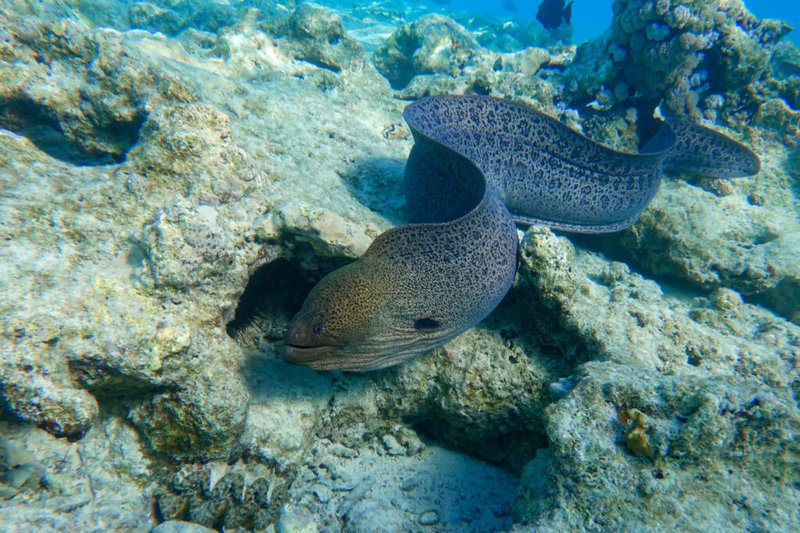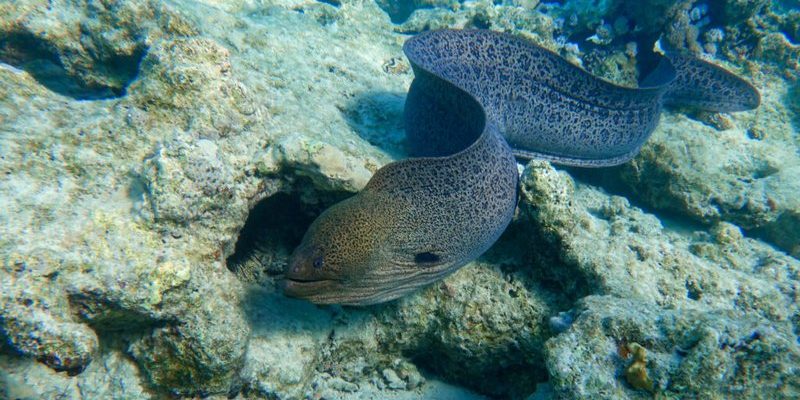
Moray eels are more than just a pretty face in their underwater world. They have unique behaviors, features, and even a surprising diet! Here’s the thing: understanding these amazing creatures not only satisfies our curiosity but also helps us appreciate the diverse ecosystem they inhabit. So grab your favorite drink, and let’s dive into ten cool facts about moray eels that might just blow your mind.
1. A Wide Variety of Colors and Patterns
Moray eels are like the fashionistas of the ocean! With over 200 species, they show off a stunning range of colors and patterns. From the vibrant green of the *green moray* to the striking black and yellow stripes of the *zebra moray*, each species has its own unique style—just like humans!
These colors aren’t just for show; they serve practical purposes too. Bright colors can help camouflage them amongst the corals, while the more drab hues help them blend into rocky environments. You might be wondering how they change colors. Well, they don’t, but their surroundings can give them the illusion of looking different depending on the light and angle of view!
2. They Have Two Sets of Jaws
You heard that right! One of the most bizarre and fascinating traits of moray eels is their two sets of jaws. The first set is the jaws we all know and recognize, but the second set, called pharyngeal jaws, is hidden farther back in the throat.
When a moray eel bites its prey, it uses its first set of jaws to grab on. Then, its pharyngeal jaws shoot forward to pull the food deeper into its throat. It’s almost like a horror movie, but in the best way possible! This super-efficient feeding mechanism allows them to tackle prey that’s often larger than themselves.
3. They’re Masters of Camouflage
Moray eels are expert hiders. Their bodies can easily blend into their surroundings, making them tough to spot. They often hide in crevices and coral reefs, waiting for the right moment to strike.
This camouflage isn’t just for sneaky eating; it’s also a defense mechanism. When they feel threatened, they often stay put, relying on their colors and patterns to make them less visible. Think of them like introverts at a party, preferring to stay in the background rather than put themselves out there!
4. A Unique Diet
When it comes to food, moray eels are not picky eaters. They mainly feast on fish and squid, but they’ll chow down on crustaceans like shrimp and crabs too. If you were to peek inside their diet, you’d see they have favorite snacks—like reef fish, which they can hunt using their keen sense of smell.
Here’s the thing: moray eels are not the typical “sneaky” predators. They often ambush their prey rather than chase it. When they spot a meal, they’ll slowly emerge from their hiding spot and bite down quickly, using their two sets of jaws to secure a good catch!
5. Not All Are Solitary
While many moray eels prefer the solo lifestyle, not all of them are loners. Some species are known to share their homes with each other or even with other creatures, such as cleaner shrimp. This relationship is quite interesting: the shrimp clean the eel’s teeth in exchange for protection from predators.
Imagine having a roommate whose sole purpose is to keep your space clean! While it sounds convenient, it’s also an essential relationship in the underwater ecosystem that helps maintain the health of the moray eel.
6. They Have Poor Eye Sight
You might think that with their menacing appearance, moray eels would have excellent eyesight. But here’s the surprising detail: moray eels have poor vision. Instead, they rely on their incredible sense of smell to navigate their environment and find food.
Their nostrils are located on the top of their heads, allowing them to detect scents from above while keeping their bodies hidden. It’s like having a nose that doubles as a radar system for smells—it helps them thrive even in murky waters.
7. They Can Be Social But Sometimes Aggressive
Moray eels can exhibit fascinating social behaviors, but they also have a reputation for being a bit aggressive. When threatened or cornered, they can lash out, showcasing those intimidating teeth.
However, when feeling safe, many moray eels can be curious and even friendly toward divers. It’s a bit like meeting someone who’s shy at first but warms up once you get to know them. If you’re ever diving near one, just remember to respect their space!
8. Their Lifespan and Growth
Moray eels can have a long lifespan, with some species living for over 30 years! They grow throughout their lives, with many reaching impressive lengths of up to 13 feet, depending on the species.
As they age, their growth slows down, much like humans. Just imagine swimming alongside a 30-year-old moray eel, gliding through the reefs with grace. It’s remarkable to think about how long these creatures have been around, contributing to their ecosystem.
9. They Play a Role in Coral Reef Health
Moray eels are more than just interesting creatures; they play a crucial role in maintaining the health of coral reefs. By preying on herbivorous fish that munch on algae, they help control algae populations, allowing corals to thrive.
In this sense, they’re like the gardeners of the underwater world. By keeping their ecosystem balanced, they ensure that vibrant coral reefs can flourish, which benefits countless other marine species.
10. They’re Not Dangerous to Humans
Even with their fierce appearance and sharp teeth, moray eels aren’t inherently dangerous to humans. They usually avoid contact and prefer to stay hidden. That said, like any creature, they can bite if they feel threatened, so it’s a good idea to observe them from a distance.
It’s important to respect their space, and remember that they’re just trying to survive in their unique way. If you encounter one while snorkeling or diving, marvel at its beauty and keep your distance.
In conclusion, moray eels are some of the ocean’s most intriguing inhabitants. With their unique features and behaviors, they certainly deserve our admiration. So next time you think of the deep blue sea, remember the fascinating lives of moray eels, who play such a vital role in their underwater ecosystem.

